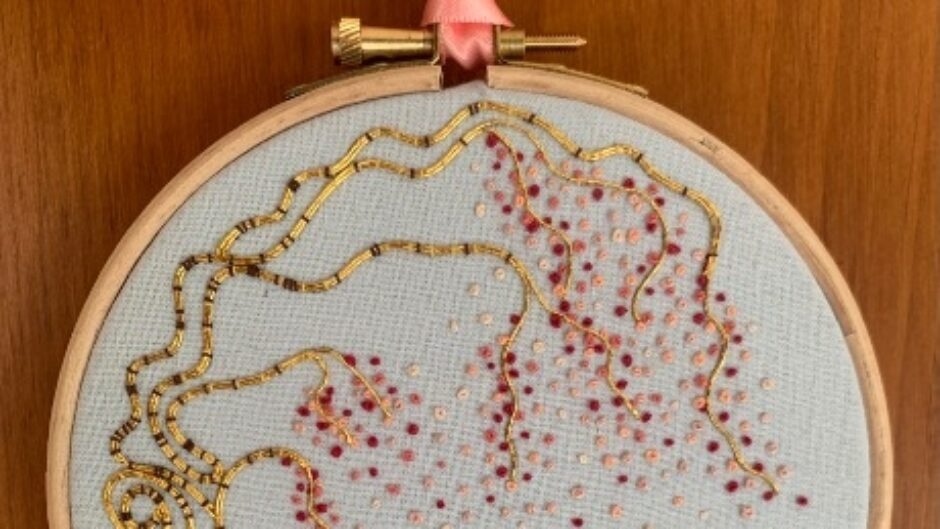On May 7th, a group of students gathered via Zoom for a day of stitching. Pulling together this hands-on workshop was a feat in the era of remote learning and communication, but thanks to the organizers we had each received a trove of embroidery supplies in the weeks prior (I may have exclaimed out loud when I opened my own supply kit). Over the course of several hours, we followed along as Auburn Claire Lucas demonstrated the entire process step by step, from stretching the fabric over the embroidery frame to threading the needle and sewing couching stitches and French and Japanese knots.
My research at The Courtauld Institute of Art revolves around carpets woven in Iran in the Safavid period (1502–1722). Such objects can have a tendency to mystify the viewer: the finest quality textiles tend to obscure the artist’s hand and technique. Thousands of tiny knots, stitches, and crossings of threads appear as the stroke of a pen or a brush. When we handle and closely observe textiles, we can begin to understand the logic behind them and the many choices that compounded to produce such wondrous things. Taking up a needle and thread on Friday I experienced this decision-making process first-hand.
The main feature of Auburn Claire’s “Japanese Cherry Blossom” embroidery design is the brilliant gold thread that forms the tree’s trunk and branches. Some of the most spectacular Persian carpets woven in the seventeenth century have large areas of metal-wrapped thread brocading. This embroidery project presented an opportunity to work with metal-wrapped threads, which pose unique challenges to the artist. These silk or cotton threads wrapped tightly with thin gilded foil are more pliable and cost-effective than solid metal wire, but are also delicate and difficult to work with. To avoid over-working and damaging the metal-wrapped threads, we carefully couched them onto the surface of the fabric using tiny stitches in a colour that would blend and go unnoticed. Along the way, “Italian couching” stitches in a contrasting colour added a decorative effect to this otherwise functional element of the embroidery. Because the metal-wrapped thread couldn’t be directly threaded into a needle and sewn through the fabric, the end of each gilded branch had to be “plunged” by carefully pulling the tail of the metal-wrapped thread through a tiny hole using a cotton thread loop.
This material witness workshop has gone a long way to demystify carpets and textiles woven and embellished with metal-wrapped threads. I am grateful to Auburn Claire Lucas of the Royal School of Needlework for sharing her beautiful design and expertise with us, and to Teresa Lane, Alixe Bovey, and Grace Williams from The Research Forum at The Courtauld for organising such a wonderful day of stitching.









